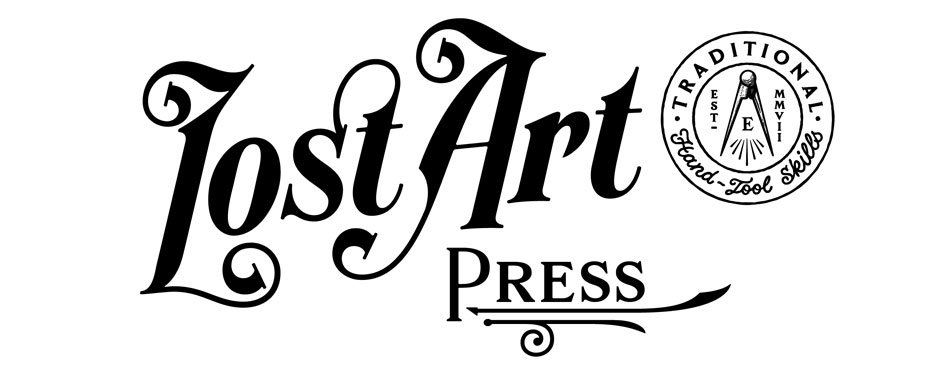
With all the agony possible, we have decided to slash the price of our deluxe “With All the Precision Possible: Roubo on Furniture” and sell off the remaining stock of this limited volume.
The original price was $550; the sale price is $250 plus $15 shipping anywhere in the United States. We have about 500 copies of the book in stock. Once it is gone, it is gone forever.
Measuring 12-1/4″ wide x 17-1/4″ tall by almost 2-1/4″ thick, “Roubo on Furniture” is the largest and most luxurious book we have printed since Lost Art Press was founded in 2007.
The text is printed on #100 Mohawk Superfine paper, the finest domestic paper available today. To match the fine paper, the images and plates are printed in full color at a linescreen few presses can achieve.
The result is a level of detail and clarity rarely seen in a modern book.

The book’s signatures are sewn, casebound and reinforced with a fiber tape that will ensure the binding will outlast us all. The hardbound boards are covered in a beautifully printed pattern with a cotton cloth cover on the spine. The spine is then debossed in gold and black.
The entire book comes in a custom-made slipcase covered in a complementary-colored cotton cloth.
You can read all about the contents of the book here. And here.
While we are discontinuing the deluxe edition, we will continue to offer the standard “Roubo on Furniture” ($57) for as long as we possibly can – just like the rest of our books. Our goal is that the information will always be available.
Why Sell Off the Deluxe Books?
When we went to press with the deluxe version of “Roubo on Furniture,” we wanted to give it a price tag that was reasonable for a book that is over the top in quality. The initial printing quotes put the retail price at $1,000. The only way to get the price lower was to double the print run to 1,000 and take a smaller profit on each sale.
We decided to drain the bank account and take the risk. For the most part, things worked out. We sold about 400 copies, which inched us into the black. But during the last few years, sales haven’t covered the costs of storing the books.
Most publishers would pulp the books, or sell them to a discount bookseller. Instead, we’re going to put them on sale for woodworkers.
The deluxe “Roubo on Furniture” is the nicest book I’ve ever worked on. I still pick it up every week or so to look something up, and I am thrilled by the crisp printing and the beautiful binding. I don’t regret what we did.
And I hope you don’t ever regret missing out on this.
— Christopher Schwarz
P.S. This offer is available for U.S. customers. If you live outside the U.S., we recommend you use a mail-forwarding service, which can receive the book and ship it to you much more economically than we can.


















